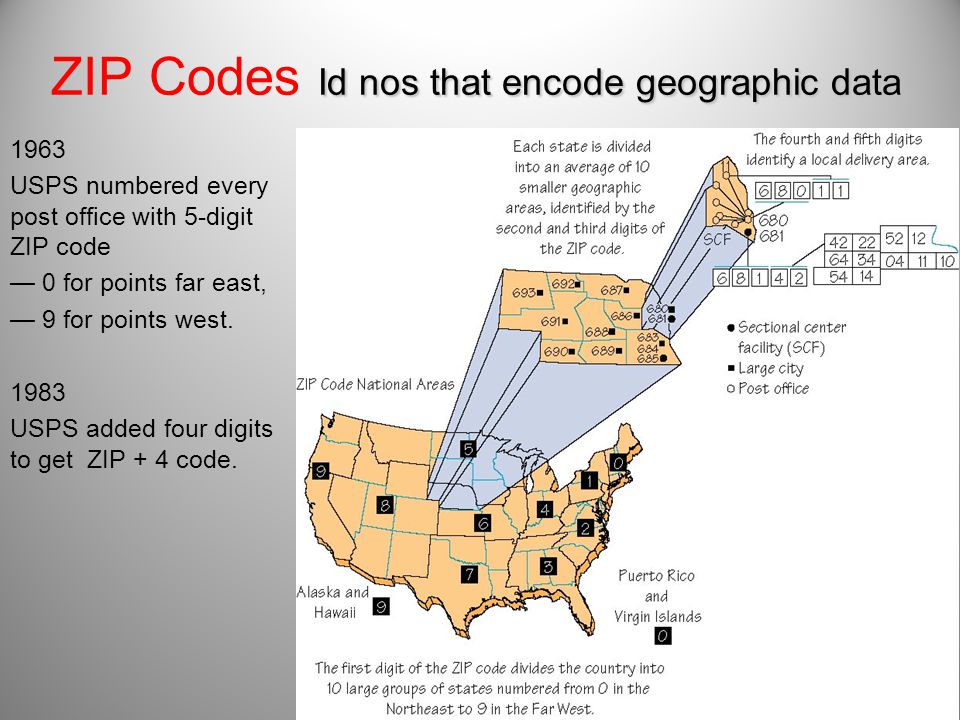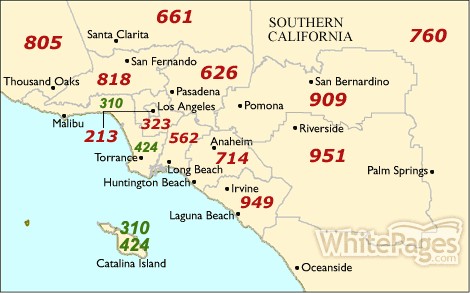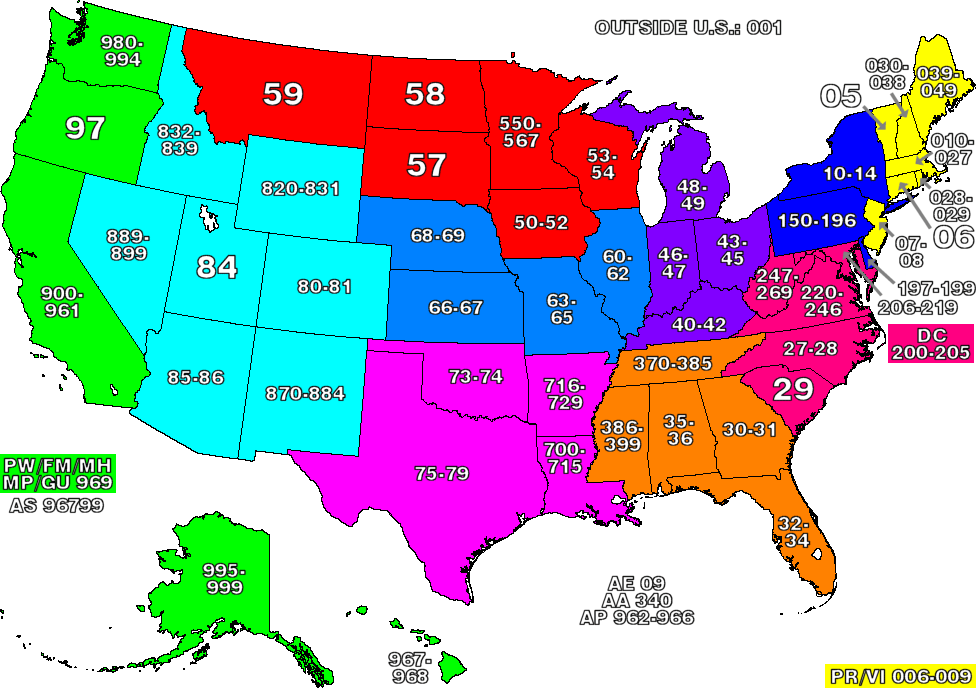How long are zip codes: So close, yet not quite there.
What’s the Deal with the 4 Extra Zip Code Numbers?
In the age of emails, DMs and video calls, you might not be overly familiar with traditional mail, and you may not even know how to properly write out your address.
One of the most frequent errors in writing out an address relates to the zip code — particularly the four extra zip code numbers sometimes found at the end of your address. You may have seen these when receiving a package that was addressed automatically or you might have seen this zip code as a suggestion when ordering something online.
So, what exactly is the deal with those extra zip code numbers? We’ve got the answers.
What the traditional zip code means
When someone asks for your zip code, you probably reply with a string of five numbers. This is the norm for most people and has actually been the norm for the U.S. Postal Service (USPS) since the beginning.
When zip codes were first introduced in 1963, it was a part of an initiative to make mail delivery in the U. S. more efficient by dividing the country up into zones based on mail routes. Most frequently, your five digit zip code represents the destination of the post office your mail is sent to before being handed off to your mail carrier.
S. more efficient by dividing the country up into zones based on mail routes. Most frequently, your five digit zip code represents the destination of the post office your mail is sent to before being handed off to your mail carrier.
Each number of a zip code corresponds to a specific piece of information about the destination. The first number, between 0-9, denotes a geographic area of the U.S. The second two numbers of a zip code specify a specific region within that geographic area and the last two are meant to indicate a specific Post Office.
Some post offices service more than one zip code but, for much of the U.S., there’s a one-to-one ratio of post offices to zip codes. This is why you’re often required to go to a specific location to conduct business with the USPS.
Fun fact: Zip codes are based on region — codes begin at 0 in the east and move towards 9 on the west coast as you cross the U.S.
What the extra four numbers mean
The extra four numbers in your zip code were introduced two decades after the initial introduction of a zip code.
As infrastructure in the U.S. grew, the five digit zip codes system had to be replaced with something more precise. In 1983, a system was created to locate buildings more precisely. A standard zip code coupled with the four extra zip code numbers can now be used to designate specific streets, buildings, houses or businesses.
How important are the four extra zip code numbers?
For most uses, the standard five digit zip code will suffice without having to know the full nine digit zip code. There are some exceptions, however.
Some businesses are eligible to receive a bulk mailing rate at a discount. This mail is sorted separately from general-delivery mail and often takes a bit longer to arrive at its destination. But, for many businesses the discount is worth it. The USPS requires a full nine-digit zip code for mail sent at a discounted bulk rate.
Another time you may find yourself wanting to know your full nine digit zip code is when looking up congressional representatives based on your address. Knowing your full zip code is the only way to identify your specific government representatives in some districts.
Knowing your full zip code is the only way to identify your specific government representatives in some districts.
Regardless, knowing your full zip code will ensure that your mail is delivered correctly more often. Most mail will arrive at its destination no-problem if you just use your standard five-digit zip code, but if you’re worried about nondelivery of a package, specifying the intended destination even further doesn’t hurt your chances.
How Your Zip Code Could Affect Your Lifespan
Predicting lifespan isn’t an exact science. U.S. life expectancy is currently estimated at 78.6 years, but that one number doesn’t tell the whole story. Genes, gender, lifestyle and luck all play an important part, but it’s impossible to know exactly how much and in what proportion each ingredient influences a person’s longevity.
The single best predictor, though, might not be one of these factors at all. A growing body of evidence suggests it may be a person’s zip code that holds the most information about how long they’ll live. Researchers from the New York University School of Medicine recently used data from NYU Langone Health’s City Health Dashboard to find that 56 of the U.S.’ 500 largest cities are home to people who can expect to live at least 20 fewer years than those in other neighborhoods, even if they’re just blocks or miles away.
Researchers from the New York University School of Medicine recently used data from NYU Langone Health’s City Health Dashboard to find that 56 of the U.S.’ 500 largest cities are home to people who can expect to live at least 20 fewer years than those in other neighborhoods, even if they’re just blocks or miles away.
In Chicago, the city with the largest disparity, life expectancy varied by up to 30.1 years, and in both Washington, D.C. and New York City it varied by more than 27 years. Meanwhile, residents of Fishers, Ind., the city with the smallest gap, can expect to die within about 2.5 years of their neighbors across the city.
A zip code’s influence on the health of those living there is multifold. Where you live directly affects your health in a number of ways, from exposure to air pollution and toxins to accessibility of healthy food, green space and medical care. But it’s also a more subtle indicator of socioeconomic factors that are inherent to health and longevity, including race and income. The cities with the widest gaps in life expectancy, the NYU researchers found, were those that were most segregated by race and ethnicity, with predominantly minority neighborhoods often facing obstacles—like poverty, untenable housing costs, unemployment and subpar social services—that didn’t affect majority white neighborhoods to the same degree.
The cities with the widest gaps in life expectancy, the NYU researchers found, were those that were most segregated by race and ethnicity, with predominantly minority neighborhoods often facing obstacles—like poverty, untenable housing costs, unemployment and subpar social services—that didn’t affect majority white neighborhoods to the same degree.
Links between race, poverty and health have been reinforced by years of inequality, and disentangling them won’t be easy. But understanding the ties between zip code and health can help local lawmakers, public-health officials and community representatives begin to level the playing field for their residents, the NYU researchers argue.
These maps illustrate geographic differences in life expectancy in the three U.S. cities with the largest gaps: Chicago, D.C. and New York. (Note: gray regions of the map are those for which there are no data in the City Health Dashboard.)
Digging a little deeper into Chicago, the city with the nation’s biggest geographical life expectancy gaps, we can see some of the key factors driving those disparities. Chicago is far more racially and ethnically segregated than most U.S. cities—NYU set its “segregation score” at 44.6, well above the national average of 12.6—which the researchers found to be closely linked with lifespan disparity.
Chicago is far more racially and ethnically segregated than most U.S. cities—NYU set its “segregation score” at 44.6, well above the national average of 12.6—which the researchers found to be closely linked with lifespan disparity.
Largely black neighborhoods in the Far South Side have some of the city’s lowest life expectancies, and also some of the highest rates of unemployment. Access to fresh food also tends to be lacking in these areas, contributing to higher rates of obesity.
Write to Jamie Ducharme at [email protected].
How long mail items are stored
Contents
Many people face a problem: the post office informs about the arrival of the parcel, but it is impossible to receive it immediately for some reason. In this situation, one of the postal services becomes in demand – the ability to save the parcel for a specified period.
The article details how long items and letters sent to the post office, including those from abroad, are kept in the post office, where unclaimed parcels are sent, and whether they can be found and returned.
How long the parcel is stored at the post office
Previously, according to the law, parcels were kept for a month. But since June 2018, the rules have changed – the holding period has been significantly reduced.
Now it is only 15 days from the moment the parcel arrives at the post office at the recipient’s place of residence.
Letters, including international ones, and translations are stored for 30 days .
But court correspondence is supposed to be kept no longer than 7 days.
The holding period begins to count from the day following the arrival of the parcel at the post office.
It is possible to extend the storage period up to 2 months, starting from the day of arrival at the post office. For this, a paid service is ordered. The recipient (or authorized representative) writes a paper application with the entry of passport information, submits it to the post office where the shipment arrived, pays for the service at a certain rate.
Paragraph No. 34 of the “Rules for the provision of postal services” states that changing the storage period is possible only when this service is noted in the contract concluded between the postal institution and the sending party.
That is, the recipient has the right to write an application only if there is no note “The storage period cannot be extended” on the packaging of the item sent and in the system list of the post office.
The postal staff who accepted the shipment sends a notification to the recipient. With an identity document, the recipient comes to the post office, picks up the parcel.
When the retention period has expired, the registered parcel goes in the opposite direction to the address of the sender. But if the sender does not come for the returned parcel, then it is held for up to 6 months, then it is recognized as unclaimed and must be destroyed.
The shelf life of a registered letter at the post office
The postman brings a standard letter to the addressee’s place of residence, places it in a mailbox. With registered letters, the situation is more complicated, postmen do not deliver them.
With registered letters, the situation is more complicated, postmen do not deliver them.
Such correspondence most often contains valuable information: perhaps the addressee is corresponding with government, financial, insurance, and other institutions. Therefore, the sent registered letter is accompanied by a notice of transfer to the recipient.
When mail arrives at the post office, the postman brings the recipient a notification. The recipient signs in the form of notification of the arrival of the letter. From this moment, he is given 5 days to come to the post office and pick up the letter.
If after 5 days the letter has not been picked up, then the postman is again sent to the recipient with a notification. The recipient again signs, confirming that he has read the notification. If another 5 designated days pass, and the letter is still in the mail, then a fine begins to accrue. From now on, there is a month left to pick up the correspondence.
The recipient, as in the case of a parcel, has the right to extend the retention period for a valuable letter up to 2 months. To order the service, you need to contact the post office that accepted the letter, make an application.
To order the service, you need to contact the post office that accepted the letter, make an application.
Shelf life of a parcel with Aliexpress at the post office
The Aliexpress marketplace is becoming increasingly popular. Consequently, the number of parcels from Chinese suppliers is increasing. It is impossible to say unequivocally how long a purchase with Aliexpress is stored. The answer is determined by the value of the goods sent.
If the order is larger than 5 cm in diameter, it is included in the category of parcels. Therefore, store it for 15 days.
If something small, flat, made of paper has arrived from China, then this order will be considered a letter. In this case, the recipient is given the month to pick up the purchase. You need to clarify this issue for each specific order with the postal service.
Purchases made on Aliexpress may take up to 2 months to reach buyers. But not every buyer can afford to stay at home for such a long time, waiting for the parcel.
Someone needs a business trip, someone ordered a tourist route. No one wants to cancel business and vacations. And having left for 2 weeks, a person loses the package for which he paid in the online store.
To prevent such a nuisance from happening, you need to agree in advance with a trusted person to issue a paid order storage service.
The period of storage of the parcel at the post office has expired: what to do
In a situation where the recipient returns from a trip, and the free retention period for the parcel has expired, you need to act based on the type of shipment.
If the parcel is standard, then it, having passed into the status of unclaimed, lies at the post office for another six months. You can come to the post office, talk to the staff. They will try to find the package among the unclaimed.
If it is a registered letter, then it, having become unclaimed, is returned to the sender. In this situation, mailers can no longer help. The only thing that can be done is to ask the post office staff to indicate the sender’s address.
The only thing that can be done is to ask the post office staff to indicate the sender’s address.
Then you can write to the sender with a request to return the goods. Perhaps the sender will go forward. There are also cases of luck when postal workers, despite the expiration of the retention period, due to workload, delay sending the parcel in the opposite direction.
Correspondence from the courts is dealt with strictly. Letters from the courts are kept in the post office for only 7 days, the next day they are immediately sent to the institutions that sent them. And it’s impossible to get them back.
Therefore, the receipt of a court letter should not be delayed. And a person who communicates with judicial representatives on some issues is probably interested in receiving correspondence in a timely manner.
In each case, you need to contact the post office. Situations are different, but mailers usually help unlucky buyers, suggest how to solve the problem.
how Russian Post logistics works / Sudo Null IT News
If you sent a letter from Moscow to Moscow, you might notice that it took an incomprehensible detour. For example, a letter from Altufievo to Yasenevo can pass through Noginsk near Moscow. Here is the tracking of a test letter sent from the Tverskoy district of Moscow to Lefortovo. His route looks like this:
Davydkovo is a large sorting center in Vnukovo. Before reaching the recipient, the letter will go through three sortings. The distance it travels is almost ten times the apparent distance on the map.
It seems that the letters should take a simple and direct route. However, Russian Post delivers 2.4 billion letters and invoices and 440 million parcels a year. On such a scale, such logistical hooks are necessary, since they provide centralized sorting and automation. And then each shipment will be delivered faster on average.
But that’s not the main secret. The fact is that we have already scheduled a car, train or plane for your package, which you will send only next month. Suppose that it will be addressed to Yekaterinburg. We know that, on average, a certain volume of correspondence will go from Moscow in that direction. The mail needs to detect this parcel in the total mass, put it in a separate pile, load it into a car, take it to an airplane or train, carefully shift it, then unload it somewhere at a distance of a thousand kilometers, sort it again on the ground and take it to the addressee.
The fact is that we have already scheduled a car, train or plane for your package, which you will send only next month. Suppose that it will be addressed to Yekaterinburg. We know that, on average, a certain volume of correspondence will go from Moscow in that direction. The mail needs to detect this parcel in the total mass, put it in a separate pile, load it into a car, take it to an airplane or train, carefully shift it, then unload it somewhere at a distance of a thousand kilometers, sort it again on the ground and take it to the addressee.
In fact, getting from point A to point B is not very difficult. The real challenge is to do it both quickly and inexpensively. We would like to tell you about how Postal technologies solve this problem.
Receipt of departure
It all starts with the delivery of the shipment to the office. The operator accepts a letter or parcel and assigns it a track number – a unique 14-digit postal identifier that can be used to track the entire supply chain.
On the website or in the Mail application, by the track number, you can see where the letter is and find out the expected delivery time, which we call the target date. This is the main standard in logistics. It is calculated on the basis of a directory that indicates how many days it takes to deliver certain types of shipments from region to region:
- Simple departure from Kaliningrad to Chelyabinsk = 7 days
- 1st class departure from Kaliningrad to Chelyabinsk = 4 days
- EMS from Kaliningrad to St. Petersburg = 2 days.
And so – for all possible combinations and types of delivery. In the calculation, speed will take precedence over shipping costs. If there is a choice – to bring it on time, but more expensive, or later, but cheaper, then the Post will choose the first option.
The operator receives the consignment and enters data about it into the front IT system. Then the information enters the Data Cloud of the Russian Post. The cloud accompanies the parcel, shares data on its movement with the mobile application and the pochta.ru portal, and then analyzes the path and looks for how to optimize it. But that’s later. In the meantime, the departure from the post office, where the operator accepted it, is sent for sorting.
The cloud accompanies the parcel, shares data on its movement with the mobile application and the pochta.ru portal, and then analyzes the path and looks for how to optimize it. But that’s later. In the meantime, the departure from the post office, where the operator accepted it, is sent for sorting.
Right and left
When enough letters and parcels are collected in the department, they are sent to the sorting center. We have several types of sorting centers: smaller ones within the city, where shipments from several departments are collected and which it makes no sense to carry separately for large sorting, and Large Sorting Centers.
Sorting centers and post offices operate on the Sortmaster system, which forms sets of letters and parcels at the touch of a button. The contents of each of these kits travel in roughly the same direction, and if a shipment hit one of them, then surely there is no other that would go closer and more accurately to its destination.
Each registered postal item (RPO) has a bar postal identifier (SPI), which corresponds to the track number.
“Sortmaster” reads the IPN, extracts the address and index from the Data Cloud (please write the index correctly, it helps a lot!). The array of indices is the main working tool of the Sortmaster – it forms the so-called departure plan, which looks something like this:
In accordance with the departure table with these eight indices, they will be decomposed into two piles, and each will go in its own direction.
Not all shipments have a barcode. Postcards and letters that you throw in the mailbox and sign by hand are considered unregistered. It is more difficult to process them and send them to the right address. We use Optical Character Recognition (OCR) to sort these shipments.
OCR works like this: a letter on a tape gets under a camera that photographs the text and recognizes what is written there. First of all, it looks for an index and an address and tries to match one with the other.
Let’s say the OCR input has the following piece of text:
The algorithm recognizes handwritten characters and extracts among them the values of postal attributes – index and address. After that, the address is normalized: “SPb” turns into St. Petersburg, and “B. Pushkarskaya” – into “Bolshaya Pushkarskaya”. The algorithm then returns structured text, separated into fields, so that it can be put into the database. The result looks like this:
After recognition, the shipment will be sorted by index and will go further.
The end point is known, now you need to calculate the best route. The best one is the one that meets the deadlines and requires the least cost. Modeling such routes is a separate feature within Mail. It has a lot of variables: it depends on the deadlines, the list of intermediate sortings and, most importantly, the already clear delivery volumes.
Volumes are extremely important, because you need to plan transport based on them. It’s not enough for us to just give the car on time. Often, departures travel by several modes of transport: auto, rail, aviation, and they need to be docked with each other with minimal delay. If the car can still be quickly brought to the entrance, replaced with a more or less roomy one (and this is not done at the snap of a finger), then there is a small problem with trains and planes – they live according to their own schedule.
It’s not enough for us to just give the car on time. Often, departures travel by several modes of transport: auto, rail, aviation, and they need to be docked with each other with minimal delay. If the car can still be quickly brought to the entrance, replaced with a more or less roomy one (and this is not done at the snap of a finger), then there is a small problem with trains and planes – they live according to their own schedule.
Delivery
Everything goes according to plan
The Russian Post is planning a load for about a month in advance. Already in May, we know that in June about 10 tons of letters will go from Moscow to Krasnodar. And with St. Petersburg, Muscovites have a livelier correspondence, so we are laying 30 tons. And so for each direction.
This planning is a problem with millions of variables, which is solved by the regional postal logistics process modeling system (MPLL) using mathematical optimization methods, it calculates the future load based on previous statistics, seasonal forecasts and other inputs from about 60 different reference books.
This system is very demanding on computing resources. In our case, this is a geographically distributed cluster with multi-threaded information processing, which contains four hundred processor cores. It cannot be called a supercomputer, but it successfully copes with its goal. The task of mathematical modeling is well parallelized, because it is necessary to perform a large number of calculations of the same type and compare the results. The scheduling is very precise, so increasing the cluster capacity is unlikely to improve delivery quality. Much more useful would be operational monitoring, which observes deviations from the schedule and quickly resolves problems that arise. This is part of the larger task of transport planning. We can already order it, because we have planned the download.
To do this, we calculate how many transport units and what capacity will be required to transport mail between sorting centers, branches and other logistics points. And all this on such a scale: 17,260 own cars, 96 attracted auto companies, more than 1,000 own and partner flights daily. Russian Post is the largest territorial postal operator in the world, we operate in nine time zones covering 17 million square kilometers.
Russian Post is the largest territorial postal operator in the world, we operate in nine time zones covering 17 million square kilometers.
The transport logistics system (TMS, Transport Management System) is responsible for planning the machinery. Our task is not just to find transport, but to find the most economical option possible. To do this, we load into TMS the information that we received at the planning stage of the total load and compare it with the available tariffs and the conditions of transportation of our own and hired vehicles. The result may not be the cheapest possible, but it will be the most affordable of those that can deliver the shipment on time.
According to the results of the calculations, we learn that on Monday at 12:00 a 20-ton car from the hired carrier Romashka LLC (their rates turned out to be the most favorable on the desired route) should leave for a specific point. At this point, we know that it is loaded economically (in terms of volume or weight – this is also the task of TMS). To calculate the route, we use an open source router based on the Open Source Routing Machine.
To calculate the route, we use an open source router based on the Open Source Routing Machine.
As a result, we draw up a schedule that allows us to transport the entire volume of correspondence so that the letters do not accumulate for a very long time (the addressee will be upset), do not travel in half-empty cars (very expensive, the sender will be upset), and fit exactly into the specified transport (the aircraft does not rubber). We are looking for the golden mean.
Planned routes or fixed schedules can be implemented in TMS, but since traffic events affect the quality and speed of delivery, we need a more flexible solution that can quickly load existing routes. Creating such a solution is an example of one of the challenges that the Postal Technology team is working on.
Time control
Now the situational center deals with the issues of operational planning. Its employees track deviations from target dates in real time. Data flows here from Data Cloud, reports, letters and calls.
Data flows here from Data Cloud, reports, letters and calls.
If an employee of the situation center sees that the items did not leave the sorting center on time, he will clarify what is wrong. Perhaps the car broke down or got stuck in a traffic jam, then in order to meet the deadlines, you will need to order another one.
Card where the center employee tracks problems
To monitor the movement of vehicles along the routes, we collect data from information systems, from dispatchers and from the Glonass transport monitoring system. When the driver drives along the route, the geolocation of the car is transmitted to the logistics system, which is compared with the plan. As a result, we see any deviations and inconsistencies with the deadlines.
Results and plans
After sorting and transportation, the letter gets to the office, and then to the recipient. Information about this delivery has become part of the big data, based on which we will build future forecasts.
 Let’s say the OCR input has the following piece of text:
Let’s say the OCR input has the following piece of text: